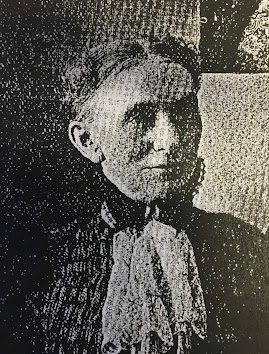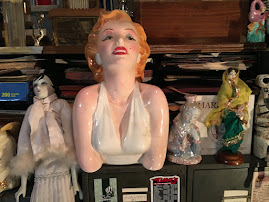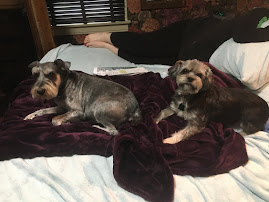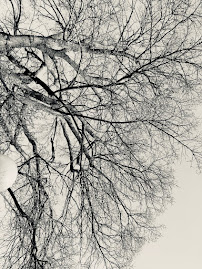Dear George,
While family and friends have enormous influence on who we
become as persons, the larger culture also provides us with a potpourri of
heroes and heroines who epitomize the society’s values and provide role models
for behavior. Many of these figures take on an almost tangible presence
in one’s life. For example, I probably knew more in childhood about Dick
Tracy or Batman than I did about many neighbors and acquaintances. To get
a better handle on these role models, here are some of the “heroes” that I
recall as important to me between the ages of eight and twelve (mid to late
1940’s).
Captain Marvel
I did a lot of reading as a child, and many of my heroes came
from books, either about historical figures, e.g., Daniel Boone, Kit Carson, or
fictional creations, e.g., Robinson Crusoe, Paul Bunyan, Huckleberry
Finn. My true passion, though, was comic books. My Uncle Kent’s
Rexall drugstore was a half block from my grade school, and I’d eat lunch there
on schooldays and stop in again after school. Kent allowed me to read all
the store’s comic books as long as I took them back to his office and didn’t
bend any pages. There were, of course, many heroes – Superman, Batman and
Robin, the Flash, Aquaman, Wonder Woman, Plastic Man, the Green Lantern,
etc. My favorite, though, was Captain Marvel (a.k.a, Billy Batson).
Like Superman, Captain Marvel possessed superman strength, speed, and the
ability to fly. Teenager Batson would transform himself into Captain
Marvel by uttering the magic word, Shazam. “Shazam” stood for the wisdom
of Solomon, the strength of Hercules, the stamina of Atlas, the power of Zeus,
the courage of Achilles, and the speed of Mercury. Captain Marvel, of
course, battled evil-doers of all sorts. In 1944 Captain Marvel was the
most popular comic book hero in the U.S. beating out Superman and all the
others. More recently Wizard Magazine ranked Captain Marvel the 55th
greatest comic book character of all time, but, in my mind, he will always be
number one.

Hopalong Cassidy
In grade school my friends and I went to weekend matinees at the
Menominee Theater (the old opera house) and the Lloyd Theater, as well as
Thursday afternoon films at the D.A.R. Boys’ Club. Most of the main
features were cowboy westerns, featuring Roy Rogers, Gene Autry, Hopalong
Cassidy, the Lone Ranger, the Cisco Kid, and others. Roy Rogers was the
king of the cowboys, but, because he and Gene Autry always included singing in
their movies, my friends and I preferred Hopalong Cassidy. Hoppy had
white hair, wore black clothes and a black hat, and rode a magnificent white
horse named Topper. Gabby Hayes played his sidekick, Windy
Halliday. Hoppy had astonishing skills with his six-shooter and lariat,
and I don’t think he ever lost a fistfight, even against four or five villains
at once. Like other cowboy heroes, he acted on behalf of honest citizens
who were being preyed upon by criminal gangs and rogues.
The Shadow
TV, of course, didn’t exist in the Twin Cities during my grade
school years. Instead, my siblings and I huddled around the family radio
in our living room, especially on Sunday nights. My favorite shows were
comedies – Jack Benny, Fred Allen, the Great Gildersleeve, Fibber McGee and
Molly, Duffy’s Tavern, etc. – though these didn’t feature “heroes” as we
normally think of them. However, the detective/mystery radio dramas all
featured great heroes of the era, e.g., Sam Spade, Charlie Chan, Boston
Blackie, the Shadow, the Saint, the Thin Man, etc. My favorite was the Shadow,
who possessed “the power to cloud men’s minds so they cannot see him.”
The Shadow’s real name was Lamont Cranston, “a wealthy young man about town,”
and he and his love interest, socialite Margo Lane, took on villains of all
sorts. Every show began with the statement, “Who knows what evil lurks in
the hearts of men.” That invariably sent shudders up and down our spines.
President Harry S. Truman
World War II had an enormous impact on children in our
community. I was five when the U.S. entered the war in 1942 and was about
to enter third grade when the war ended in August, 1945. My dad was in
the Navy in the Pacific. We learned about wartime events from family,
from radio and the Movietone News, and from our teachers and the Weekly Reader
at school. President Franklin D. Roosevelt, of course, was a central
leader of the allies’ efforts in World War II, and consequently the nation was
shocked and frightened when Roosevelt died on April 12, 1945. His
vice-presidential successor, Harry Truman, was a relatively obscure senator
from Missouri who had run a haberdashery in Kansas City before beginning his
political career. Despite controversy that continues to the present day
about Truman’s decision to unleash the atomic bomb, he was credited with bringing
the war to an end. We children, whose fathers would soon be coming home,
regarded him as a hero who had risen to the occasion. Unpopular in his
day, Truman was recently ranked fifth among U.S. presidents in a C-Span poll.

Don Hutson
Many of the heroes of my childhood, of course, were college and
professional athletes. Menominee is located 45 miles north of Green Bay,
and the adults and kids in our community were avid members of Packerland.
The Packers had won NFL championships in 1936, 1939, and 1944, thanks in
good part to their star player, split end Don Hutson. Historians of the
game conclude that Hutson created many of the modern pass routes used in the
NFL today. During Hutson’s eleven seasons with the Packers, he was an
eight-time All-Pro selection and was named the NFL’s Most Valuable Player
twice. By the time of his retirement in 1945, Hutson held nearly every
major NFL receiving record, including career receptions, yards gained, and
touchdowns. He still holds the Packers’ record for most receptions in a
game. We kids playing touch football at Triangle Park all pretended to be
Don Hutson when we ran out for a pass.
George Mikan
When I entered sixth grade at Washington Grade School, my
grandfather insisted that I join the school basketball team. It scared
the wits out of me, but, within a few months, I became totally devoted to
learning the game. My brother Steve and I played endlessly in our
driveway. The nearest professional team was the Minneapolis Lakers, and
the local radio station broadcast their games. Their star was George
Mikan, a six-foot ten-inch center who dominated the professional game and who
was known as “Mr. Basketball.” This was long before the era of big men in
basketball, very tall players being regarded as lacking athletic ability and
unlikely to perform adequately at a professional level. Mikan was so
dominant that he caused several major rule changes in the NBA, most notably the
ban on goaltending, the widening of the foul lane from 6 to 12 feet, and the introduction
of the shot clock. Mikan was regarded as a “Gentle Giant,” fierce on the
court but friendly and personable in private life. I’ve watched
basketball on and off over the decades, but there’s never been anybody as
thrilling to me as the great George Mikan.

Joe Louis
My friend Frank St. Peter was a boxing fanatic, and, with his
encouragement, I started listening to the Friday Night Fights on the radio each
week. The late 1940’s were a golden age of boxing, with the likes of
Rocky Marciano, Ezzard Charles, Jake LaMotta, Jersey Joe Walcott, and Sugar Ray
Robinson. The greatest of all, however, was the “Brown Bomber”,
heavyweight champion Joe Louis. Born in rural Alabama in 1914, the
grandchild of former slaves, Louis was the number one contender in the
heavyweight division by 1935, and he won the title against James J. Braddock on
June 22, 1937. He was world heavyweight champion for the next twelve
years, scoring 52 knockouts in 70 professional fights. Ring Magazine
rated Louis #1 on its list of the “100 Greatest Punchers of All-Time,” and he
is widely regarded at the first African American to gain the status of a
nationwide hero in the U.S. Frank and I were thrilled with Joe
Louis’s power and invincibility, and he was near the top of my list of
heroes.
I look at my list with some nostalgia and still have twinges of
admiration for the various entries. I do note that all of my childhood
heroes were male, though this was probably typical for a boy. Girls of my
age might have included Wonder Woman, Eleanor Roosevelt, Annie Oakley, Brenda
Starr, and others. The culture’s offerings of heroes and heroines for
children probably has more to do with the reinforcement of stereotypic gender
roles than with anything else. When I look over my list the themes
cutting across the various figures seem particularly heavy on attributes that
our culture has traditionally deemed “masculine”: e.g., dominance, achievement,
leadership, competition, strength. Many of these “heroes” excelled in
capacities for physical aggression and violence, though always channeled in
socially legitimate directions. There are few that I would characterize
as high in empathy, emotional expressiveness, nurturance, or interpersonal
skills. That could be because I grew up in a historical era marked by
rigidly defined gender roles. I don’t have any sense of who little kids’
heroes and heroines are today. I’ll have to check with our grandkids.
Love,
Dave



















































































































































































